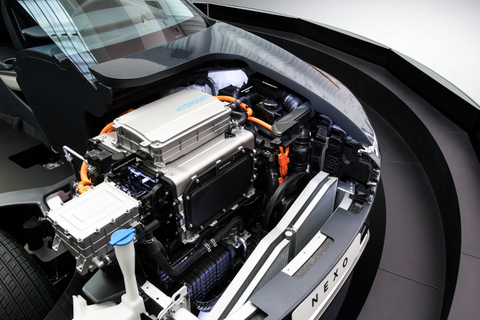It’s Not Just Engines, But Propulsion Systems
The automotive trade magazine Wards has been picking the 10 best powerplants created by automakers for 25 years, but things changed this year. The awardees have morphed during the two and half decades, but going forward the award itself is changing to become the “10 Best Engines & Propulsion Systems.” The change acknowledges the more prominent role of fuel cell stacks and battery-powered electric motors.

“I never thought I’d live to see the day when a fuel-cell car and a battery EV would make the list the same year as two burly V8s and a sophisticated four-cylinder engine with variable compression,” commented WardsAuto editor Drew Winter.
The field has gotten very diverse, showing both the innovation of new technology as well as the robust progress of traditional internal combustion engines. Here are the 2019 winners listed alphabetically by the brand of vehicle in which it is marketed:
- BMW X5’s 3.0-liter double overhead cam (DOHC) turbocharged inline-six (I6)
- Chevrolet Silverado’s 6.2-liter overhead valve (OHV) V8 with Dynamic Fuel Management cylinder deactivation
- Ford Mustang GT’s 5.0-liter DOHC V8
- Ford F-150’s 3.0-liter DOHC turbodiesel V6
- Honda Accord Hybrid’s 2.0-liter DOHC Atkinson-cycle i-VTEC four-cylinder
- Hyundai Nexo’s 120-kilowatt-hour (kW) fuel cell electric propulsion system
- Hyundai Kona EV’s 150-kW electric propulsion system
- Infiniti QX50’s 2.0-liter DOHC variable compression (VC) turbocharged four-cylinder
- Lexus UX 250h’s 3.0-liter DOHC Atkinson-cycle four-cylinder hybrid system
- Ram 1500’s 3.6-liter DOHC Pentastar eTorque mild hybrid V6
This lineup if reflective of two somewhat conflicting trends in the American automotive marketplace—the shift to trucks and the move to alternative powertrains.

All but two of the propulsion systems are found in trucks or SUVs. Half of the systems feature hybrid or full-electric drive. Also note that four major regions of automotive production are recognized—the U.S., Europe, Japan and Korea. We wouldn’t be surprised to see some Chinese propulsion systems appearing in coming years; many parts on existing award-winners already come from there.
We’ve driven quite a few of these vehicles during the past year and concur with Wards that the advances in powertrains are creating the best of both worlds—offering alternative propulsion as well as very sophisticated internal combustion engines that offer efficiency along with unparalleled power. It’s an amazing time and we’re glad to see Wards catching up with it not only in its award selections, but its name as well.
